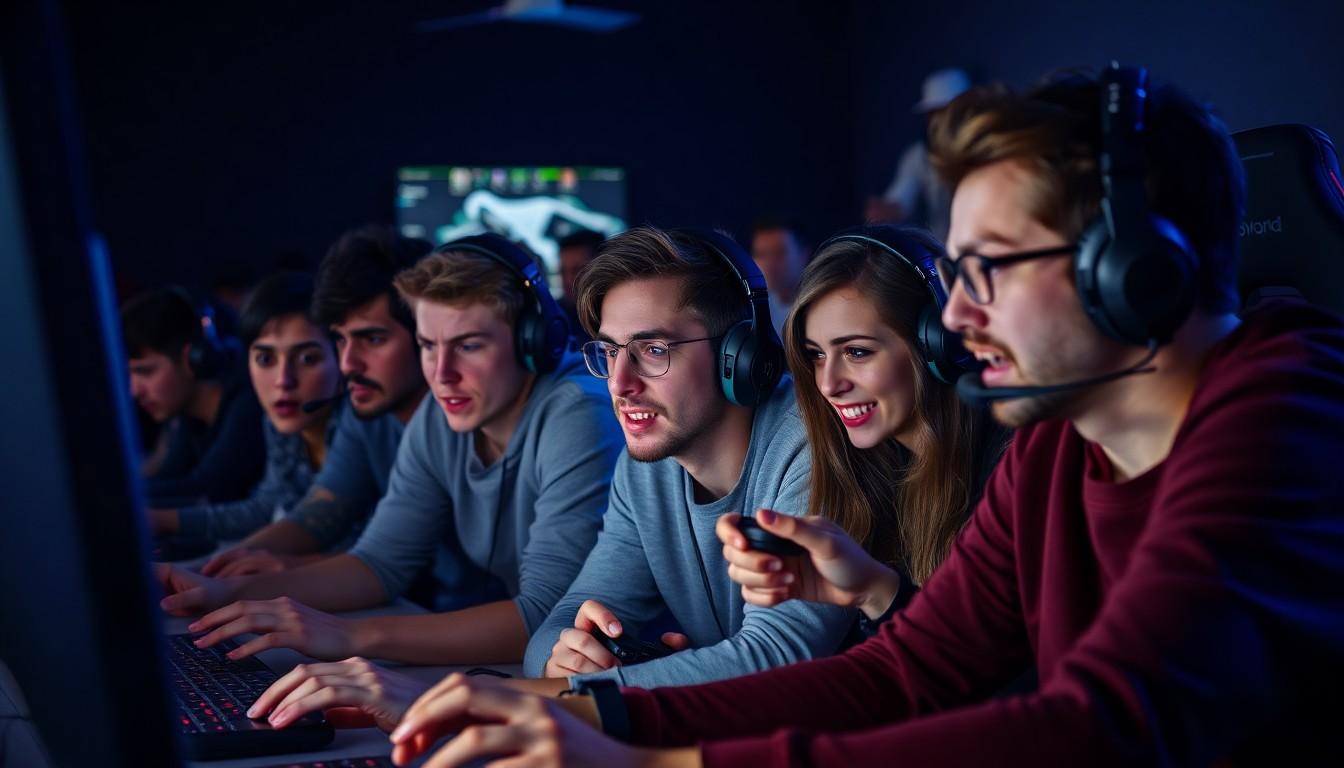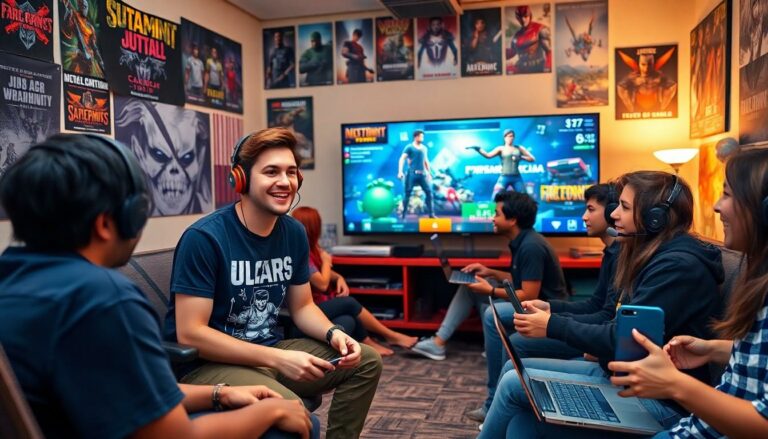Most Toxic Gaming Community: Why These Players Ruin the Fun for Everyone

In the vast universe of gaming, where epic battles and heroic quests reign supreme, there’s a dark side lurking in the shadows—the toxic gaming community. Picture this: players hurling insults like confetti, flaming each other over pixelated mishaps, and engaging in virtual warfare that’s more heated than any boss fight. It’s not just a game; it’s a battleground of egos and keyboard warriors.
Most Toxic Gaming Community
Toxic gaming communities manifest in various forms, often defined by negative interactions among players. Aggressive conduct, harassment, and derogatory language frequently contribute to an unwelcoming environment. These behaviors can discourage new players from engaging with the community and diminish overall enjoyment.
Notable games, such as League of Legends and Call of Duty, display distinct instances of toxicity, demonstrating the negative impact on player experience. In these environments, anger and frustration often replace camaraderie, leading to hostility in chat and voice communications. Such aggressive exchanges can create a cycle where toxicity breeds more toxicity, making it challenging for players to escape the negativity.
Numbers reflect the scale of the issue. Reports indicate that over 50% of gamers experience harassment online. This statistic highlights the extent of the problem and the urgent need for solutions within the gaming industry. Game developers recognize these challenges and have begun implementing reporting systems to address toxic behavior more effectively.
In addition, online platforms play a crucial role in shaping community dynamics. Social media and forums allow echo chambers to develop, encouraging toxic attitudes to proliferate. This environment can reinforce negative behavior, making it seem acceptable among players.
Consequently, the gaming community suffers when toxicity goes unchecked. Players often feel alienated and unwelcome, which can lead to a decline in active participants. Understanding these dynamics is essential to fostering a more positive environment for everyone engaged in gaming.
Factors Contributing to Toxicity

Several factors contribute to toxicity in gaming communities, significantly impacting player experiences. Understanding these components helps in addressing the issues effectively.
Anonymity and Online Behavior
Anonymity allows players to act without accountability, often leading to aggressive interactions. Many individuals feel emboldened to share insults or engage in harassment when their identities remain hidden. Studies indicate that 70% of gamers believe anonymity contributes to negative behavior in online games. Players, freed from social repercussions, exhibit hostility that overshadows positive interactions. As a result, rampant toxicity becomes normalized, making it challenging for community leaders to foster a healthy environment.
Game Design and Community Management
Game mechanics often encourage competition, fueling hostile interactions among players. Titles like League of Legends and Call of Duty prioritize ranking and performance, leading to heightened emotions during gameplay. Community management also plays a crucial role; a lack of proper moderation can allow toxic behavior to flourish. When developers fail to implement effective reporting systems, toxic players feel no consequences, and negativity persists. Improved oversight and inclusive designs that emphasize cooperation can significantly reduce toxicity in gaming communities.
Case Studies of Notable Communities
The following examples illustrate toxic behavior prevalent in specific gaming communities, showcasing how hostility can overshadow gameplay and interactions.
Community 1: League of Legends
League of Legends exemplifies a highly toxic environment. Players frequently encounter harassment, with reports indicating that over 50% of gamers experience such behavior. Insults and derogatory language are common, leading to a discouraging atmosphere for newcomers. The competitive nature of the game intensifies emotions, resulting in aggressive interactions that diminish overall enjoyment. Community management struggles to curb this toxicity, as players feel emboldened by anonymity.
Community 2: Call of Duty
Call of Duty also demonstrates significant levels of toxicity. Players often engage in aggressive conduct, which manifests through insults and psychological harassment. Statistics reveal that 70% of gamers associate this anonymity with negative behavior in online interactions. While many players seek camaraderie, the experience quickly becomes hostile, pushing away both casual gamers and veterans. Game developers face challenges in implementing effective systems to address these issues.
Impact of Toxicity on Players
Toxicity significantly affects players’ mental health and overall gaming experience. Emotional distress manifests through anxiety and depression, often stemming from negative interactions in gaming communities. Players in hostile environments frequently report decreased enjoyment and increased frustration during gameplay.
Over 50% of gamers encounter online harassment, making it a widespread issue. Exposure to such toxicity leads to diminished motivation to engage with the game. These negative experiences can even result in players abandoning games, afraid of encountering harassment.
Anonymity plays a crucial role in fostering toxic behavior. Studies indicate that 70% of gamers attribute negative actions to anonymous interactions. This lack of accountability encourages aggressive conduct, making it challenging for community leaders to cultivate a positive atmosphere.
Players often become desensitized to aggressive remarks and toxic communications. Consequently, they may participate in or overlook harmful behavior, inadvertently perpetuating a cycle of toxicity. Such environments hinder new players from joining communities, ultimately stunting growth and inclusivity.
Game design choices can exacerbate toxicity. Competitive elements inherent in many games amplify emotions, leading to hostile behavior during gameplay. Lack of effective community management further enables toxic behavior to flourish, diminishing the overall gaming experience.
Implementing robust reporting systems helps combat these issues but requires commitment from developers. Prioritizing community engagement and designing inclusive experiences can mitigate toxic behaviors. Creating a safe and welcoming environment remains essential for fostering enjoyment in gaming.
Strategies for Improvement
Establishing clear community guidelines promotes positive player interactions. Developers can set expectations for behavior in games, helping to define acceptable conduct. Implementing robust reporting systems allows players to report toxic behavior easily. Transparency in handling reports builds trust within the community, encouraging players to speak out against harassment.
Fostering accountability through identity verification can reduce anonymity’s impact. Players often act aggressively when they feel anonymous, so requiring authenticated accounts may deter negative behavior. Encouraging game design that rewards cooperation over competition can significantly influence player interactions. Designs emphasizing teamwork promote a more inviting atmosphere.
Creating educational resources on sportsmanship enhances player awareness. Players learn the impact of their words and actions, cultivating empathy within communities. Community events that focus on inclusive gameplay bring players together. These gatherings highlight cooperation and enjoyment rather than toxicity.
Promoting a culture of positivity through in-game messaging motivates players to uplift one another. Examples of positive behavior can inspire others, creating a ripple effect. Engaging community leaders to address toxicity directly establishes role models within the gaming environment. Leaders often command respect and influence, enhancing efforts to discourage negative interactions.
Supporting mental health initiatives within the gaming community helps players cope with the stress of toxic environments. Collaborations with mental health organizations can provide essential resources. Lastly, collecting and analyzing player feedback continuously measures the effectiveness of strategies in place, ensuring communities remain responsive to issues as they arise.
Enjoyment and Inclusivity
Toxicity in gaming communities poses a significant barrier to enjoyment and inclusivity. The prevalence of aggressive behavior and harassment not only affects player experiences but also impacts mental health. As the gaming industry evolves it’s crucial for developers and community leaders to take proactive steps in combating this issue. Implementing effective reporting systems and fostering a culture of accountability can help create a more welcoming environment. By prioritizing cooperation over competition and promoting positive interactions players can enjoy a richer gaming experience. Addressing toxicity is essential for the growth of gaming communities and the overall well-being of players.



